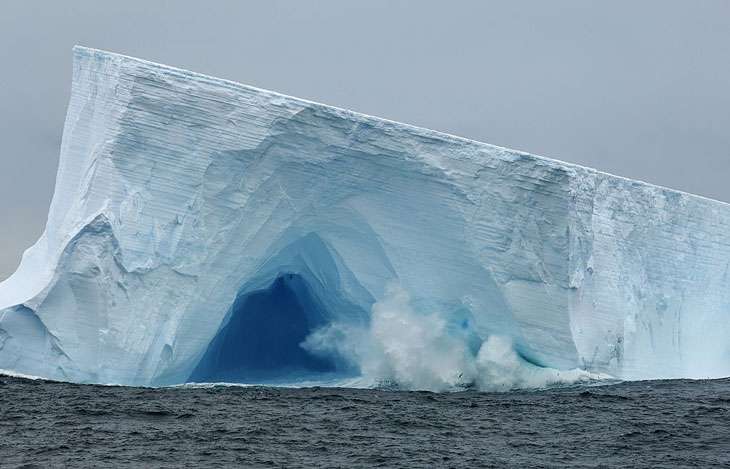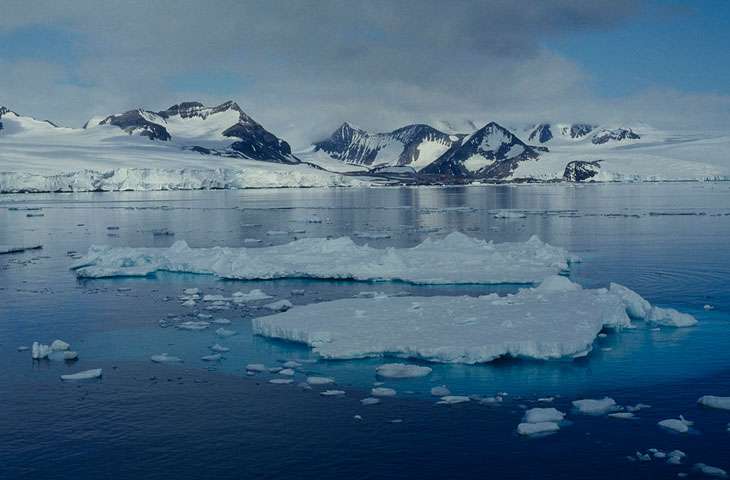Beautiful blue lakes in the Antarctic equals imminent disaster

Here's one lakeside view that's got the world's science community staring agape in horror. A new study has revealed that numerous lakes - all lovely shades of azure - are being seen atop East Antarctic ice sheet's Langhovde Glacier. It's beautiful to look at. Except, scientists have seen these lakes appearing before - on the fastest melting ice mass of the world, Greenland. The study has scientists worried that the lakes are an ominous indication of yet another vital landscape falling prey to global warming.
This latest satellite-based study found that between 2000 and 2013 summers, almost 8,000 such "supraglacial" or meltwater lakes formed in East Antarctica's Dronning Maud Land, on top of the Langhovde Glacier. "Supraglacial lakes" or meltwater lakes are small to mid-sized water bodies that form as hot summer air heats up the surface of an ice sheet. Such lakes have been mushrooming across Greenland for years now - a serious indication of global warming and a strong cause of ice sheet collapse.
Also Read -Thanks to global warming, we now need an ice library in Antarctica
How, you may ask? As the meltwater from the lakes drains into the underlying ice, it lubricates the ice sheet's foundation, potentially weakening it and rendering it more likely to fracture and break apart.

The research, published online by Geophysical Research Letters, was led by Emily Langley of Durham, in collaboration with Stewart Jamieson and Chris Stokes from her university and Amber Leeson of Lancaster University. The implications of this work are enormous since it has already been established that Greenland too has been melting rapidly due to these kinds of lakes.
However, when it comes to East Antarctica, "that's the part of the continent where people have for quite a long time assumed that it's relatively stable, there's not a huge amount of change, it's very, very cold, and so, it's only very recently that the first supraglacial lakes, on
top of the ice, were identified," Jamieson, a glaciologist at Durham University, told the Washington Post.
"What we find is that the appearance of these lakes, unsurprisingly, is correlated directly with the air temperature in the region, and so the maximum number of lakes, and the total area of the lakes, as well as the depth of the lakes, all of these things peak when the air temperatures peak," Jamieson further added.
The study used more than 150 optical satellite images and meteorological records from 2000-2013, observing 7,990 lakes and 855 surface channels up to 18.1 km inland. The absolute damage to the landscape can be more difficult to ascertain because of the remoteness. In an email response to the Washington Post, Richard Alley, a glaciologist at Penn State (not involved in the study) said that, "across many sensors and studies, there is summertime melting on the surface of Antarctica around the edges, and sometimes in some places extending farther inland than you might think".

The places where the melt happens, can be really hard to reach. To establish statistics for that can be harder - and less palatable. But the point is to not wait for a time when the facts become too unpalatable to deal with.
"It's not hitting the glacier really hard at the moment, this process, but of course, as things warm up, we'd expect it to start doing more damage, like we see in Greenland," said Jamieson.
Also Read -Contrary to belief, Antarctica is gaining more ice than it is losing: NASA
There's more than a grain of truth in the extreme cautious approach Jamieson wants the world to adopt. The consequences of meltwater lakes have been disastrous for Greenland. Between 2011 and 2014, Greenland lost an unbelievable trillion tonnes of ice! The study showed that the melting of the Greenland ice sheet contributed twice as much to sea level rise as the prior two decades.
A similar effect on East Antarctic would add at least more than 6.6 feet (2 meters) of sea level rise over the coming years. In a separate study on Antarctic ice melt earlier this year, author Martin Siegert, an Imperial College London researcher, said: "The evidence coming together is painting a picture of East Antarctica being much more vulnerable to a warming environment than we thought. This is something we should worry about."
At least the research community is tuned in to the serious ramifications of the problem. Now if even half of the world community worries about it as much, we should be safe. Because we really wouldn't want to find out what happens otherwise.
First published: 24 August 2016, 3:03 IST






![BJP's Kapil Mishra recreates Shankar Mahadevan’s ‘Breathless’ song to highlight Delhi pollution [WATCH] BJP's Kapil Mishra recreates Shankar Mahadevan’s ‘Breathless’ song to highlight Delhi pollution [WATCH]](https://images.catchnews.com/upload/2022/11/03/kapil-mishra_240884_300x172.png)

![Anupam Kher shares pictures of his toned body on 67th birthday [MUST SEE] Anupam Kher shares pictures of his toned body on 67th birthday [MUST SEE]](https://images.catchnews.com/upload/2022/03/07/Anupam_kher_231145_300x172.jpg)






